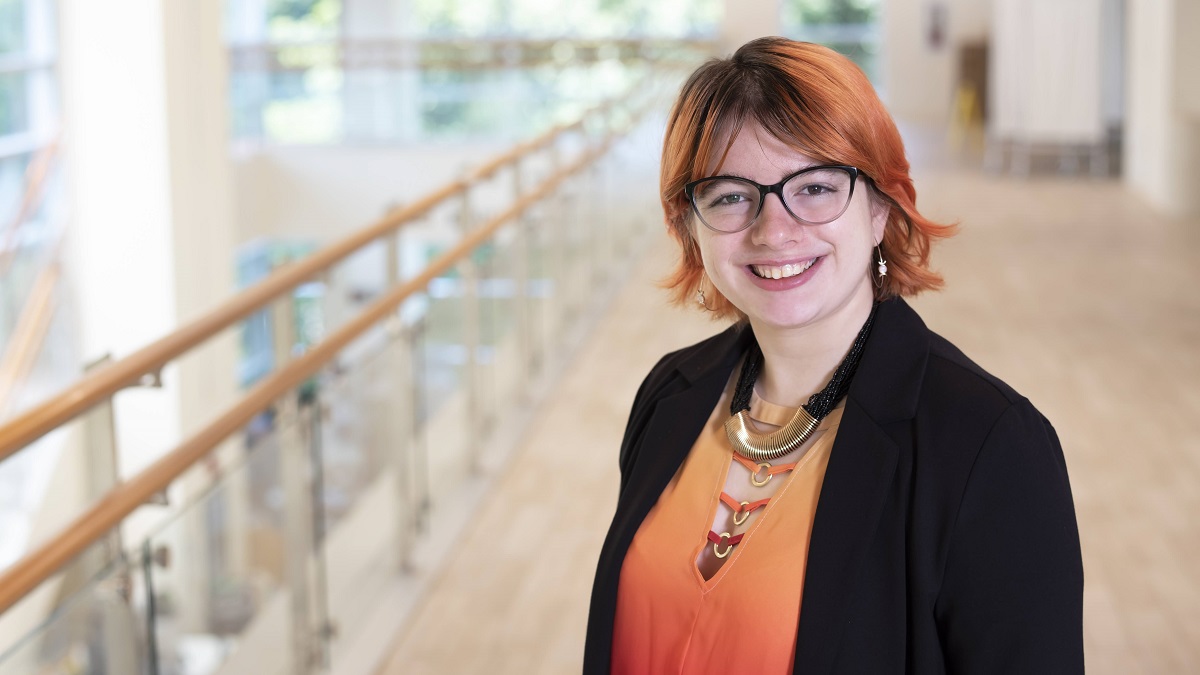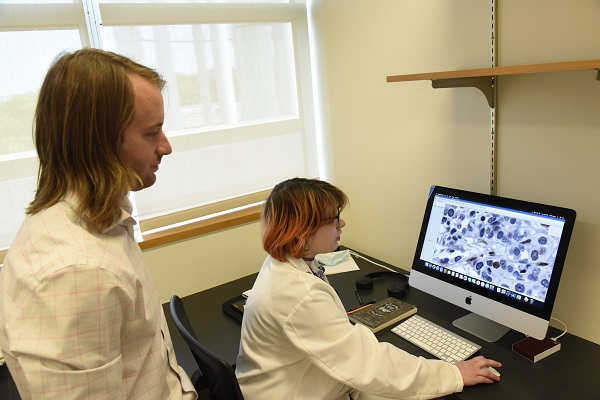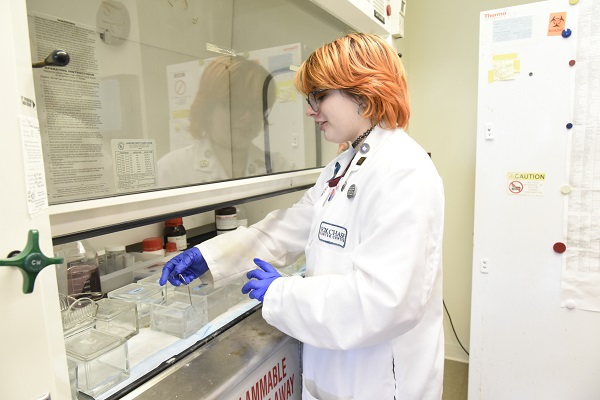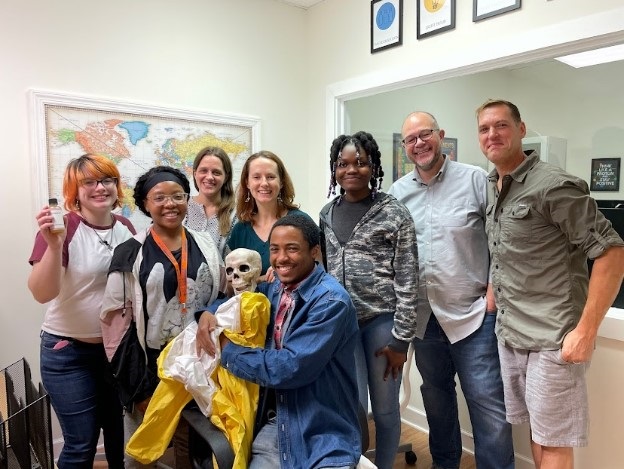
Plans Subject to Change
02 July 2021
Sometimes life doesn’t go as planned. In 2020, I planned to spend the summer at Fox Chase Cancer Center as a research fellow before heading back to school in the fall to begin my junior year as a biochemistry major. And then the pandemic happened, which cancelled the fellowship and changed my desire to return to school. I took a gap year, hoping that in person classes and the research fellowship would return. Even though I had to wait a year, I eventually got the chance to come work at Fox Chase and learn more about research as a career.

I’m currently working in Dr. Neil Johnson’s lab, which focuses on the effects of BRCA1 mutations in transformation. My labmates are all very nice and helpful, and Dr. John Krais--my mentor--is really friendly and explains the experiments I’m involved in very well. We’re presently examining the correlation between BRCA1 mutant presence and responses to different treatments, with the eventual goal of seeing if drug sensitivity or resistance can be predicted by examining the amount of BRCA1 mutant expression in a tumor sample. My own experiments revolve around visualizing BRCA1 and related proteins in tumor samples by immunohistochemistry and western blots analysis. So far, I’m pretty comfortable with making the microscope slides from tissue samples, but I’m still working on my western blot skills. Beyond the lab bench, I use image analysis software to analyze the percentage of mutant BRCA1 protein in tumors to determine a threshold for treatment sensitivity or resistance in breast and ovarian tumor tissues.

I’ve also been able to see other past and present projects carried out in Dr. Johnson’s lab in between steps of my own imaging experiments. While I mostly work on cells after they’re already placed on slides or in pellets for protein extraction, I’ve seen how human cells are grown in the lab and maintained in a stable biochemical state for consistent experimental results. I’ve also gotten to see some very interesting immunofluorescence photos visualizing DNA damage and repair within the nuclei of tumor cells, and while the double stranded repair mechanisms still confuse me at a mechanical level, the results of these techniques and the implications they have on treatment outcomes are fascinating!
Outside of the lab, I’ve been lucky enough to spend the weekends of my fellowship exploring the city. Broad Street, Walnut Street, and South Street are all incredible places to visit and walk around (as long as you make sure to stay hydrated!). Where
I’m staying in Glenside is nice too, with a good corner store and produce market just across the street from my apartment (seriously you can get a whole pound of carrots for $2). I visited the Philadelphia Zoo with Joy, another research fellow in my program, where we saw a tiger and gorillas and enjoyed ourselves despite the heat and having to navigate the busses and trains. There’s so many things to do in this research fellowship and in the city-- I can’t wait to see and do more, both inside and outside of the lab.
107 GB of Images and the Continuing Omnipresence of the Pandemic
30 July 2021
It’s time for our second update of the summer. Things have been going pretty well in the lab. I finally got through the immunohistochemistry staining steps for all of the collaborator samples. Learning how to use the scanning microscope to take photos for analysis was interesting, and while the process itself was pretty straightforward, it took a week of letting the robot run continuously to get my final image set! Despite the wait, I finally have all of the images analyzed, and the data organized into spreadsheets. Now, I can actually start analyzing the subcellular location and expression level of proteins within the tumor samples, which is pretty neat. I don’t have anything definitive yet, but in the 107 GB of data on my hard drive, I’m noticing some very interesting trends between tumor suppressor proteins, BRCA1 and 53BP1.

A big part of the fellowship includes presenting my data at a symposium. The issue of presenting our findings has been a complicated one in a post-COVID world. We had originally planned to participate in a pre-recorded video conference, but issues with the deadlines resulted in us pulling out of the event. We’re currently in the process of planning a separate live conference over Zoom the week after the program ends. While having conferences over video calls is still a facet of life I’m trying to get used to, hopefully this change will give me more time to analyze my GBs of data.
Outside of work, I went to dinner and an escape room with Dr. Purdy and my fellow interns. The restaurant was pleasant, and though getting there with half of the traffic lights not working from a storm was a challenge, it was still a fun time. The escape room was appropriately pandemic themed, though it was a bit more active than my pandemic experience of napping and watching cartoons on Netflix. It was a blast, and we finished with 30 seconds to spare. While I’m not at liberty to divulge any further details, I can say it’s definitely worth a try if you’re in the area.